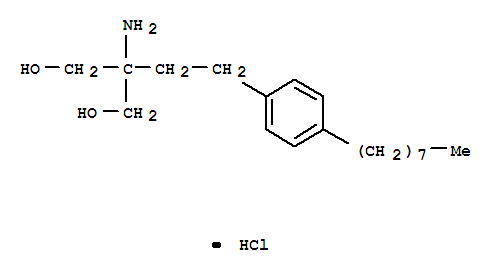Base Information
Edit
- Chemical Name:Fingolimod hydrochloride
- CAS No.:162359-56-0
- Molecular Formula:C19H34ClNO2
- Molecular Weight:343.93
- Hs Code.:29221990
- European Community (EC) Number:680-631-1
- UNII:G926EC510T
- DSSTox Substance ID:DTXSID00167364
- Wikidata:Q27132395
- NCI Thesaurus Code:C72782
- RXCUI:1012891
- Pharos Ligand ID:7TJCA8256R3B
- ChEMBL ID:CHEMBL544665
- Mol file:162359-56-0.mol
Synonyms:2-amino-2-(2-(4-octylphenyl)ethyl)-1,3-propanediol hydrochloride;fingolimod;fingolimod hydrochloride;FTY 720;FTY-720;FTY720;Gilenia;gilenya



